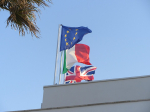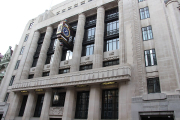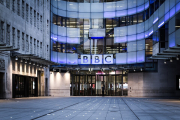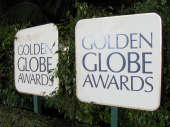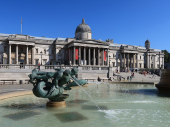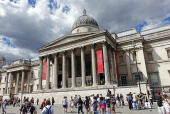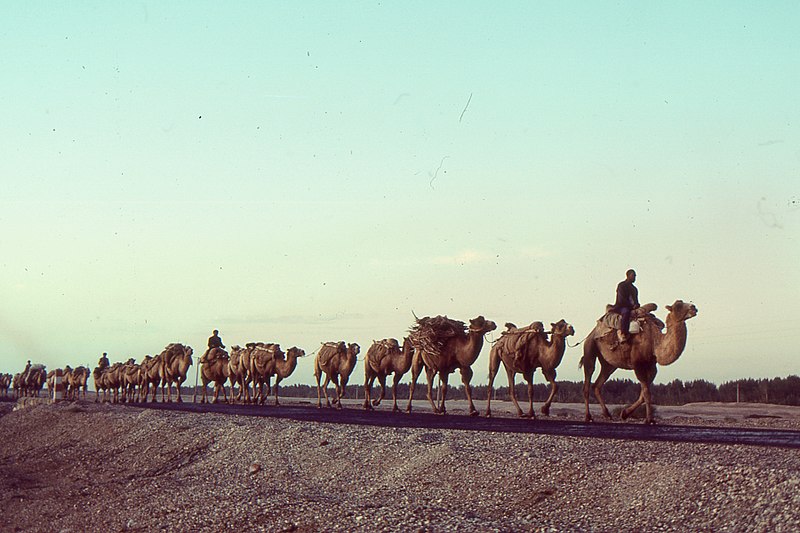
The upcoming "Silk Roads" exhibition at the British Museum promises to be an expansive exploration of one of history's most significant trade networks.
This exhibition is precisely the kind of project the British Museum excels at, bringing together artifacts and stories from across the globe to tell the tale of the ancient routes that connected the East and West.
The Silk Road, much like the Milky Way, is not a singular, literal path but a network of interconnected trade routes that stretched from Ireland to China. While commonly envisioned as a land route, like the one famously traveled by Marco Polo to the court of Kublai Khan, parts of the Silk Road were also maritime and riverine. The name “Silk Road” itself is a modern invention, coined by 19th-century German geographer Ferdinand von Richthofen. Originally called die Seidenstrasse, it became a popular term to describe the vast routes that facilitated the exchange of goods, including not only silk but also ceramics, amber, fur, spices, and even slaves.
As Sue Brunning, one of the exhibition’s three curators, points out, the Silk Road could just as easily have been named after any of the other commodities that flowed along these routes. Brunning, along with her fellow curators, brings expertise spanning from Sutton Hoo to Oxiana, making this exhibition an insightful and wide-ranging journey through time and geography. Of the 302 exhibits on display, half come from the British Museum’s own collection, while the rest are sourced from institutions abroad, including contributions from London's V&A Museum.
The exhibition covers a broad time frame, focusing on the period between 500 and 1000 AD. This was a time when civilizations from across Europe, the Middle East, and Asia were connected through trade, culture, and religion. Notably, even the Vikings made their mark on the Silk Road, trading from Ireland to the Islamic world and along river routes through Russia and Ukraine. The exhibition delves into how their notorious raiding practices were often a means to fuel trade, with Viking silver hoards being paid for with currency earned through the sale of slaves.
Slavery, a grim yet integral part of Silk Road history, was not exclusive to the Vikings. In 712, for instance, when Samarkand was besieged during the Islamic conquest of the Sogdian city-states, part of the surrender agreement involved providing 2,000 slaves to the conquerors.
The exhibition also examines how major world religions like Buddhism, Islam, and Christianity spread along these routes. Islamic texts, in particular, were transmitted through trade, facilitating the spread of knowledge and culture.
One of the exhibition’s standout artifacts is an eighth-century coin modeled after an Islamic dinar, bearing the inscription of “King Offa,” ruler of Mercia, suggesting he was aware of the vast Eastern world from which the coin originated. This discovery, along with many others, highlights how interconnected ancient societies were, even if the people themselves may not have fully understood the global scope of their interactions.
Visitors can also view a remarkable ivory pyxis from Aachen, dated around 810 AD, which depicts the biblical story of the raising of Lazarus. This artifact speaks to the diplomatic relations between Emperor Charlemagne and the Abbasid caliph Harun al-Rashid, who famously gifted Charlemagne an elephant named Abu al-‘Abbas. The elephant was a marvel of its time, and after its death, its tusk was likely used to craft the pyxis.
The exhibition tells countless stories of trade, diplomacy, and the human desire for connection. One fascinating tale is that of Willibald, an English monk who cleverly smuggled aromatic balsam past customs officials in Tyre by hiding it in a hollow gourd filled with petroleum. His ingenuity saved him from the death penalty, illustrating the lengths to which people would go to participate in the lucrative trade along the Silk Road.
Curator Sue Brunning believes the exhibition has modern relevance, emphasizing the interconnectedness of ancient societies and drawing parallels with today’s globalized world. “People were more connected, earlier than we expected, in lots of different ways,” she observes. The trade of silks, spices, and amber between Byzantium and Samarkand may seem exotic compared to our modern economy, but it underscores a shared history of exchange that stretches back millennia.
The "Silk Roads" exhibition runs from September 26, 2023, to February 25, 2025, at the British Museum. Tickets are available at britishmuseum.org. Photo by fdecomite, Wikimedia commons.




















